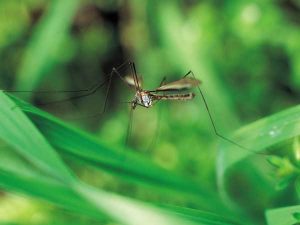 BLACKVILLE, S.C. — Enjoy the peace and quiet while you can. Things are about to start buzzing again.
BLACKVILLE, S.C. — Enjoy the peace and quiet while you can. Things are about to start buzzing again.
“Insect activity has been quiet lately primarily due to the wet, cold weather this spring, but that is about to change,” said Jeremy Greene, a Clemson University Extension entomologist at the Edisto Research and Education Center. “Our kudzu bugs are out there, and they will be in full swing in the next few weeks. Other insects will also become prevalent.”
While South Carolina’s recent weather has kept the bugs dormant for a while, it’s likely to give them a boost in the long run, Greene said.
“All of the moisture we have had is conducive to insect population development,” he said. “They love water and the things that ample water brings: plenty of wild plants and robust crops that can serve as insect hosts.”
“For the home gardeners the weather has delayed the growth of vegetable transplants and seed germination,” said Danny Howard, Clemson Extension agent in Greenville County. “On the flip side, we’ve been blessed with rainfall that will help replenish the ground and surface water after recent droughts have taken their toll.
“And our fruit crop looks good so far. We have dodged the bullet on the late frost that often occurs in April that usually has an effect on the fruit yield,” he said. “Now we have to watch for the hail storms that can damage or knock the fruit off the plant.”
Greene began a pheromone trapping program last week to gauge the threat of insects that are traditional pests of South Carolina crops.
“Populations of corn earworm and tobacco budworm are already high in my trapping program,” he said. “My prediction for the summer: We’ll have plenty of insect pressure.”
The soggy spring also has slowed planting of crops in the Palmetto State and across the nation.
Nationally, only 12 percent of the nation’s corn has been planted — about of quarter of what normally would be expected by now, according to the National Agricultural Statistics Service.
The most recent report for South Carolina showed planting of most crops was behind the five-year average: a mere 3 percent for soybeans, 5 percent for watermelons and 6 percent for corn, but 8 percent for peanuts and a whopping 19 percent for snap beans.
The estimated condition of most crops declined from excessive moisture, according to the report.

